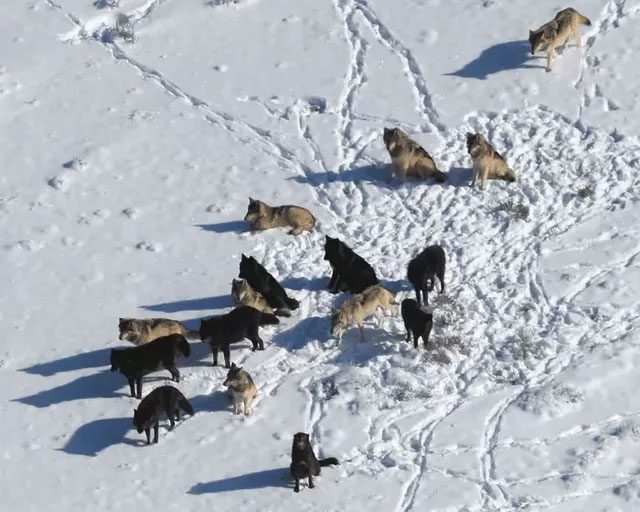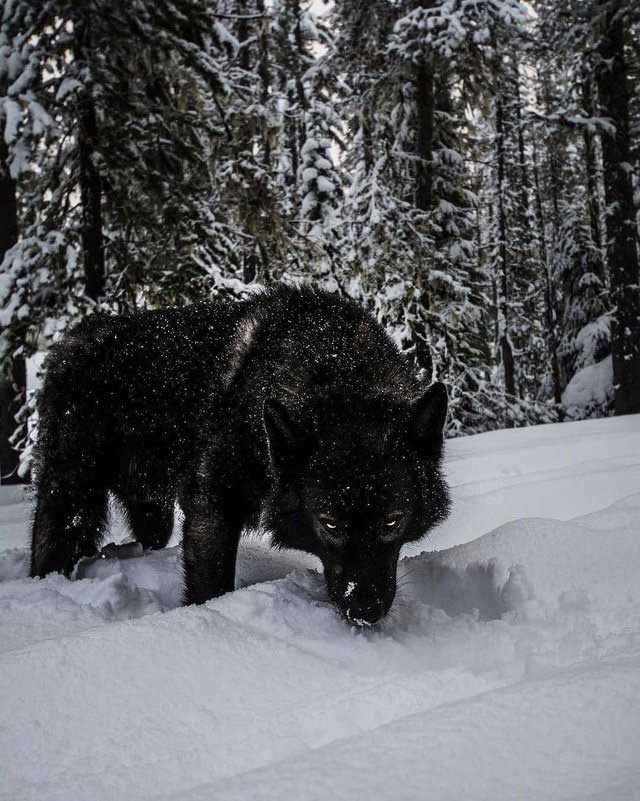A recent study has revealed that diseases and viruses are reshaping the appearance of wolves in North America.
The long-term effects of viruses often have consequences far greater than what the eye can see – but in this case, they have caused changes that humans can observe directly. The new research has found that infectious disease patterns can alter the fur of wolves in North America.

In fact, black wolves are actually gray wolves (Canis lupus). Black wolves are among the first genetically altered predators. They are often depicted in novels, films, and comics as unique individuals within the pack. The typical image of werewolves often includes wolves with black fur.
Biologists have long wondered why wolves in North America can look so different. In the Arctic regions of Canada, wolves tend to be gray, while in other southern areas, they are black. Notably, black wolves are quite unusual.
In most parts of the world, most wolf individuals are gray with varying shades, but black fur is particularly rare or completely absent in some regions. However, in North America, black-furred wolves are quite common.
Professor Tim Coulson from the Department of Biology at the University of Oxford led a research team investigating what might drive this unusual diversity. They began with a strange hypothesis: that the underlying cause could be a virus.
The fur color in wolves (Canis lupus) is determined by a gene called CPD103. Depending on the variant of the gene that a wolf possesses, its fur will be either black or gray. Viruses are known to alter human DNA, and this also occurs in other species. However, proving whether this actually happens in wolves and whether viruses affect CPD103 is not straightforward.
According to previous studies, the CPD103 gene only codes for gray fur. However, a mutation occurred in domestic dogs that somehow altered the gene responsible for fur color, and this mutation also occurred similarly in wolves, thus coding for black fur.

The common fur color of gray wolves is white and gray; however, among them, there are a few individuals with very unique black fur. The fact is that this is not their natural color.
The researchers also suspect that this gene plays a role in protecting against lung infections, particularly against a virus called canine distemper virus (CDV) – an acute and highly dangerous virus affecting most terrestrial carnivores; it can often be fatal. The researchers suspect that this gene mutation may play some role in combating CDV, as it codes for a protein that helps the body fight lung infections.
The researchers studied data on 12 wolf populations across North America, particularly around the Yellowstone area. Valuable data collected over 20 years showed that during CDV outbreaks, wolves tended to choose mates with opposing fur colors, resulting in their offspring having black fur. Additionally, black fur appeared more frequently during outbreaks, and when researchers collected samples from wolves, they found that black wolves had more CDV antibodies, indicating they were more likely to survive the disease. Overall, black wolves seem to have a higher survival rate during these outbreaks compared to gray wolves.

A 2008 study from Stanford University showed that a specific gene regulating black fur color only appears in domestic dogs; thus, black wolves appear to be the result of breeding. This gene responsible for black fur is dominant, making it mostly inherited by offspring.
Peter Hudson, Willaman Biology Professor at Penn State, stated: “Interestingly, the gene that protects against CDV comes from domestic dogs brought to North America by the first humans, and the CDV virus emerged in North America thousands of years later, also originating from domestic dogs.”
This study would not have been possible without looking at the issue from multiple perspectives. More than ten authors contributed to this research, each bringing their expertise.
“What I love about this research is how we can bring together experts from many fields and a range of approaches to demonstrate how disease can significantly impact the morphology and behavior of wolves. We are learning that disease is a major driver of evolution and affects many aspects of animal populations,” Hudson added.
Finally, the researchers believe that this type of mutation occurs not only in wolves but is, in fact, much more common than we think. Other species, including birds, amphibians, insects, and mammals, have shown a connection between color and disease resistance. It is highly likely that color, disease, and mating preferences have more in common than one might initially think.
“In most parts of the world, black wolves are absent or very rare, but in North America, they are much more common. Scientists have long wondered why this is the case. And now we have an explanation based on surveys of wolves across North America and modeling driven by unique data collected by co-authors working at Yellowstone,” Coulson concluded.





















































